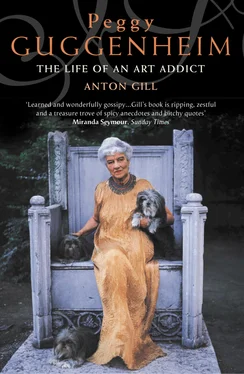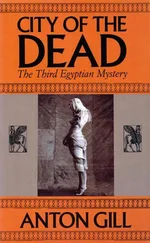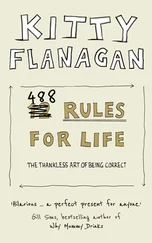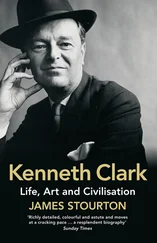Of the eight children, the ones closest to normality were arguably Samuel, DeWitt and Peggy’s mother Florette. Florette’s eccentricities were slight but palpable. She shared the family trait of meanness, and had a habit of repeating certain words and phrases three times. On occasion she would wear three cloaks, or three wristwatches. There are stories of Florette which sound apocryphal: stopped for driving down a one-way street the wrong way, she told the policeman: ‘But I was only going one way, one way, one way.’ Another time she told a milliner that she wanted a hat ‘with a feather, a feather, a feather’, and was given one with three. Her habit of triple repetition used to drive her husband Ben mad.
A picture emerges of a wan figure, in love with her handsome husband but unable to reach him, and only secure in the strict confines of the society she’d been brought up in, acknowledging its mores and happy not to move outside its social calendar or its topics of conversation. On the other hand, she had the strength to live with her unhappiness over her husband’s infidelities, and to carry on alone for the twenty-five years she survived him, especially in the difficult few years of belt-tightening that followed his death, before her own father’s death rescued her financially. Then at least Florette had shown herself capable of adapting, though nothing in her upbringing had prepared her to fend for herself without the help of servants in even the simplest domestic matters, such as bedmaking, cleaning and cooking. Nor could she pass on any such skills to her daughters. In more important matters of upbringing, too, neither she nor Ben was a good parent; but Ben had been spoilt, and Florette had been given no good example of motherhood. In her eyes, probably the most successful daughter of the three she bore her husband was the oldest, Benita, who conformed to her ideal. Perhaps Benita would succeed in her marriage where Florette had failed in hers.
If Ben and she had been able to be happier together, the story would have been different. Ben, coming from a less strait-laced background, and himself more relaxed than his brothers, might have been able to liberate Florette from the constraints of her upbringing; but by the time he met her it was too late for that, and in any case theirs was a marriage of powerful families as much as of two individuals. Almost as soon as they had set up home together, Ben resumed his philandering. So it was a suffocatingly well-heeled, desperately genteel, and very unhappy world into which Peggy was born.
‘Not only was my childhood excessively lonely and sad,’ Peggy wrote, ‘but it was also filled with torments.’ And again: ‘My childhood was excessively unhappy. I have no pleasant memories of any kind. It seems to me now that it was one long protracted agony.’
She was born on 26 August 1898 at the family home, which was then an apartment in the Hotel Majestic on West 69th Street, New York City. Her parents gave her the name Marguerite, not a family name, but not a Jewish one either, and disguised their disappointment that she was not a son. The Guggenheims had a habit of bearing daughters, to the extent that there was already some mild worry about the future of the surname.
Marguerite would have had a ‘Baby’s Record’ book similar to her younger sister Hazel’s, which is still extant. From it we learn that baby’s first gifts included $500 from Grandpa Seligman, and diamond buttons and a bracelet from his wife. Aunts Fanny and Angie provided a perambulator. Hazel’s nurse was Nellie Mullen, and her first teacher (in 1909) was Mrs Hartmann, who commented, ‘a very clever child’. Baby Hazel’s first word was ‘Papa’. Older sister Marguerite gave her a music box for her first birthday.
Peggy – as she soon became, via her father’s pet name for her of ‘Maggie’ – was the second child. Her sister Benita was nearly three years old, and as soon as Peggy was able to focus emotionally, she settled her affections on Benita, rather than her remote mother and her frequently absent father.
‘She was the great love of my early life. In fact of my entire immature life. But maybe that has never ended,’ Peggy wrote getting on for fifty years later in her autobiography. It’s difficult not to suspect her motives here, because although she and her younger sister both claimed to be rivals for the affection and attention of their older sister, as they did for the affection and attention of their father, it is probably true to say that Ben and Benita provided no more than a focus for a rivalry that was innate between the younger sisters. Both Peggy and Hazel were highly individualistic, both chose unconventional paths through life, and each always wanted to outdo the other – Hazel, as the younger of the two, forcing the rivalry more than Peggy. They were never close. Hazel suffered not only from being the younger, but from having less talent for self-publicity.
Both came to hanker for what the father and the elder sister represented: Ben was a typical absentee father, especially for Hazel, who had not even reached adolescence when he died, and as time went on his increasingly rare and brief visits to the family home, accompanied by presents and an exotic sense of travel, made him a more glamorous figure in their eyes than if he had been a humdrum, day-to-day, office-bound kind of father. Benita took on the standard role of adored older sister. She was more docile and conventional than either of her younger siblings, able to slip uncomplainingly and even gladly into the milieu her mother was at home in. Perhaps that, too, was an object of admiration and even envy for the younger two. There was something else as well: both Ben and Benita died young. A martyr’s death, in these cases through heroism in a shipwreck, and through a striving for motherhood, can attract acolytes. But there are also simpler explanations. Peggy was four and a half when Hazel was born, and ‘I was fiendishly jealous of her’.
Within a year of Peggy’s birth the family had moved out of the Majestic and into a ‘proper’ home. Ben had not yet split with his brothers, the Guggenheim fortunes were riding high, and, with little of the financial caution most of his brothers had learned from their father, he set up his family in style at 15 East 72nd Street, near Central Park. Not only was it an expensive place – Rockefellers, Stillmans, and President Grant’s widow were neighbours – but Ben had it completely redesigned and renovated in the best late-nineteenth-century taste.
Peggy revisited the house with her daughter Pegeen when she returned to America from Europe, after a prolonged absence, in 1941. Her Aunt Cora, to whom it was rented in 1911, still lived there, and Pegeen all but let Peggy down when they were admitted by the butler. As Peggy tells it, ‘When we were in the elevator, my daughter of sixteen, who was accompanying me, suddenly burst out with, “Mama, you lived in this house when you were a little girl?” I modestly replied “Yes,” and to convince her added, “This is where Hazel was born.” My daughter gave me a surprised look and concluded with this statement: “Mama, how you have come down in the world.” From then on the butler, who was ushering us upstairs, looked upon me with suspicion and rarely admitted me to the house. However, my memories alone warranted my admission.’
The house is still there, with its imposing façade. When Peggy lived in it, you entered through a glazed door to a porch, from which further glazed doors led to what Peggy called a ‘small’ lobby, though it had a fountain, dominated by a stuffed bald eagle which her father, strictly against the law, had shot at the family’s summer retreat in the Adirondacks. The eagle had its heraldic broken chains at its feet, which showed either that Ben had a keen sense of irony, or none whatsoever.
Читать дальше












